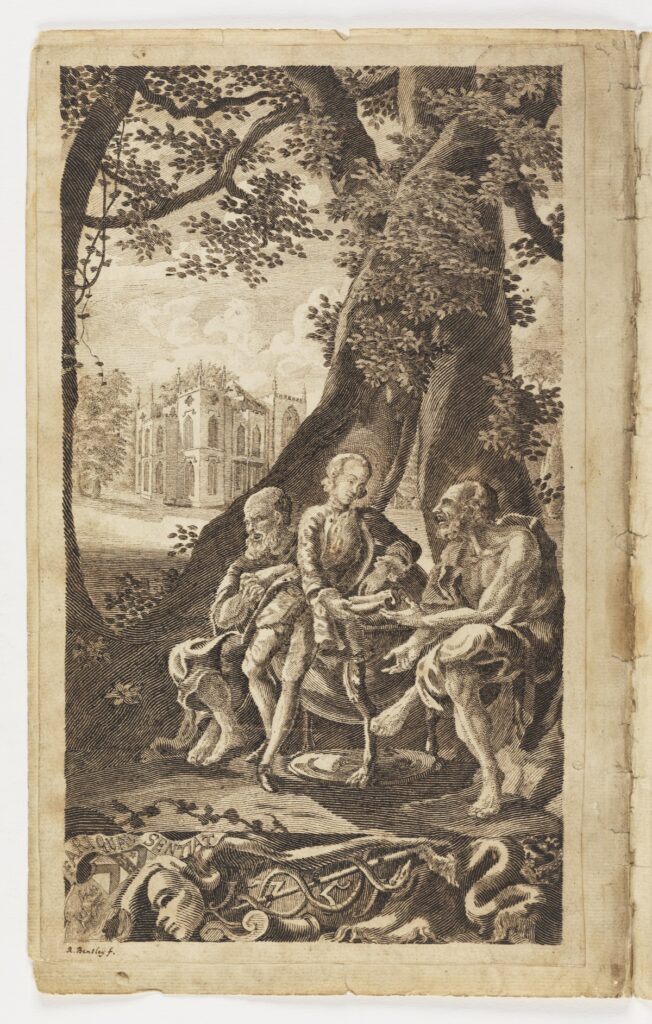It’s hard not to start with Horace Walpole (1717-1797) when researching the Gothic. His novella The Castle of Otranto he subtitled A Gothic Tale, and a few decades later critics, reviewers, and writers of Gothic stories pointed to him as a key influence. Lots of contemporary academic work still points to Castle of Otranto as the first gothic novel. Walpole was also a key figure in the architectural Gothic Revival of the mid- to late-18th century.
Once I started digging deeper in to Walpole’s writing and his life I was struck by a strong sense of recognition. Walpole’s most significant literary production were his letters. He was a prolific letter writer (the definitive collection runs to 38 48 volumes!) and in these letters he can come across as utterly contemporary. Part of this shock of recognition is also that he reads very queer. He reminds me a lot of John Waters. Arch, gossipy, smart, funny, bitchy, and not inclined to take himself seriously.
When Joseph Addison wrote dismissively of his fellow English he could have been writing about Horace Walpole (though slightly before Walpole’s time).:
“Our general Taste in England is for Epigram, Turns of Wit, and forced Conceits, which have no manner of Influence, either for the bettering or enlarging the Mind of him who reads them, and have been carefully avoided by the greatest Writers, both among the Ancients and Moderns. I have endeavoured in several of my Speculations to banish this Gothic Taste, which has taken Possession among us.” Addison, Thursday, June 19, 1712.
Walpole would take that Gothic taste and make it his own. He celebrated the epigram and wit, embraced anecdote, gossip, and witty one-liners. Walpole’s aesthetics weren’t driven by historical accuracy (though he was a noted antiquarian) but by personal joy, which included large doses of whimsy, humor, and absurdity.
Around the time he was renovating his Gothic chateau (Strawberry Hill House) his neighbors along the Thames were were also renovating. Walpole wrote:
“The country wears a new face; everybody is improving their places…. The dispersed buildings, I mean, temples, bridges, etc. are generally Gothic or Chinese and give a whimsical air of novelty that is very pleasing.”
This taste for whimsy and novelty is continually emphasized by Walpole but is often overlooked by his biographers. Perhaps by its utter ubiquity it’s not necessary to address.
In the following frontispiece commissioned by Walpole for his memoir of the reign of George II, Walpole is handing a sheaf of papers to Democritus, the laughing philosopher, and turning away from Heraclitus, the weeping philosopher. (The trope of having these two philosophers together (Heraclitus always weeping or sad, Democritus always laughing or happy) was common in this era.)

(Holy Mackerel! As I am writing this I remember that Democritus is from Abdera! Horace Walpole is Abderitic!)
There’s an abundant amount of humor and whimsy in Strawberry Hill House, and his Gothic novella intoduces an absurd element in the second paragraph. The Castle of Otranto opens with a giant helmet falling from the sky and crushing the puny prince. A moment of absurd humor that would be noted by Andre Breton when he went searching for the forebears of surrealism.
Hmmm, I wonder if there are elements of humor/absurdity in post-Walpole Gothic lit I’ve missed? Probably? But I also suspect much of the tongue-in-cheek humor prized by Walpole evaporated from the genre as it developed later in the 18th century.
